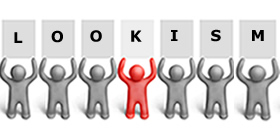Smartness or beauty cannot be the only hallmark of competency and what is beautiful is good is the most prevalent stereotype in society. It is often seen that the people who are more attractive in terms of skin tone, weight and height are kept on a higher pedestal than those who lack such traits. Particularly talking about India where people belonging to different geographical areas look different according to the different climatic conditions still a particular type of beauty standard is set in the society and people who do not resemble that set standard face lifelong bias in their houses, schools, parties and among peers. This distinction becomes worse when it is also seen in the workplace. The research found that attractive people tend to get higher salaries, have a higher probability to get employment, are more productive, are promoted easily and have more attractive partners. This arbitrary and unjust classification in a workplace without applying the intelligible differentia is in clear violation of articles 14, 15 and 16 and 21 of the constitution of India and therefore stricter laws must be to combat this issue.

During a survey, it was revealed that discrimination based on looks happens more often than ethnic or national discrimination. “A search of the PsycINFO database for physical attractiveness discrimination yielded 116 titles; however, when race discrimination is searched, 6,655 titles are found. Physical attractiveness discrimination is extremely under-researched in comparison to other types of discrimination” In a country where colourism that is discrimination between the individuals of the same race based on their degree of melanin. This bias traces its origin back to times of European colonization and even now this bias is so inherent in us that we don’t even realize that we are discriminated against. According to Daniel Hamermesh the father of Pulchronomics (the study of the economics of attractive people) that more attractive individuals earn 15% in the case of women and 25% in the case of men more than those who are less attractive. Despite all, it is so heartbreaking to see that there are no separate anti-discrimination laws in our country that would help people raise their voices.

In the state of Bihar V Kausal Kishore appointment of candidates by ‘pick and choose’ without preparing any merit list amounts to an arbitrary exercise of power. Article 16(1) guarantees equality of opportunity to all citizens “in matters relating to employment” or “appointment to any office” under the state. According to Art. 16(2), no citizen can be discriminated against, or be ineligible for any employment or office under the state, on the grounds only of religion, race, caste, sex, descent, place of birth or residence or any of them. The court must adhere to the rule of equality in the matters of public employment and it cannot pass any order which is inconsistent with articles 14, 15 and 16 of the Constitution. What these articles ensure is that no individual under similar circumstances both in obligations and privileges is discriminated against based only on the extraneous ground or prejudice. All those people who are similarly situated and belong to the same class are entitled or equal treatment. Therefore, any distinction made or any classification done which is arbitrary or irrational in the matters of public employment by the state between more attractive and less attractive individuals doesn’t fulfil the criteria of the right to equality of the Indian constitution. In Air India V Nargesh Meerza Supreme Court held that regulations 46 and 47 of Air India Employees Service Regulations are violative of articles 14, 15 and 16 of the institution as they put the retirement age of women to be 25 years on a presumption that they won’t look that beautiful and glamorous after they attain a certain age.
To eradicate a practice, it becomes very essential first to recognize it. some parts of the world recognize lookism as a form of discrimination how many don’t. includes Height and weight are protected classes from discrimination in Michigan’s Elliot-Larsen’s Civil Rights Act. “The District of Columbia Human Rights Act has not only included height and weight, but it also prohibits all appearance-based discrimination. Belgium, Santa Cruz, California, and Australian country Victoria has also enacted an ordinance to prevent physical attractiveness discrimination as it related to height, weight, and other physical characteristics. The physical characteristics in this ordinance are expressly defined as those that existed from birth, obtained in an accident, or those that resulted from disease”. European countries like France and Belgium also enacted appearance discrimination laws in 2019 and 2000 respectively. However, the standard is equally maintained across employees of the same level or class, and there is a realistic business-related purpose behind the standard.
The expression ‘Beauty lies in the beholder eyes’ looks good in books but when it comes to real-life everyone knows how someone’s physical beauty defines their life in schools, college, society in families and social gatherings. It becomes detrimental when it is also seen in the replacement. The important point of concern is not that this kind of arbitrary bias exists in society but what is important is that even when everyone is aware, seen or faced beauty bias no one has ever reported it and there is no specific law for such people who are victims of this bias. There must be more surveys conducted and more books and articles written to highlight this problem. To eradicate these three law of our country must recognise bias exists in our society and must be added with the other kinds of discrimination as mentioned in article 15 and 16. This would result in creating more awareness among people. Companies should be advised to conduct interviews through telephonic mode which would help to minimise the unconscious bias present in them.
Written by- Shivangi Goel
IMAGE SOURCES
- Yalla-blog.com
- GStatic
- Manufacturers’ monthly
The post Lookism: An analysis on appearance based discrimination in workplace appeared first on The Economic Transcript.

